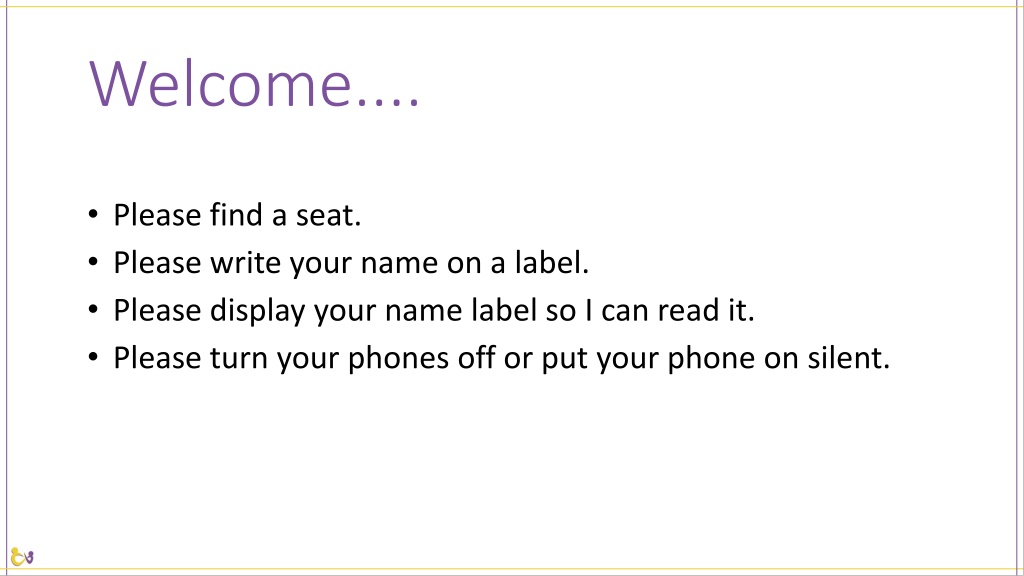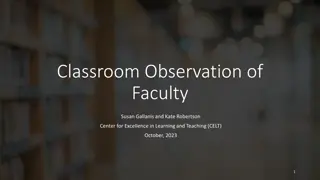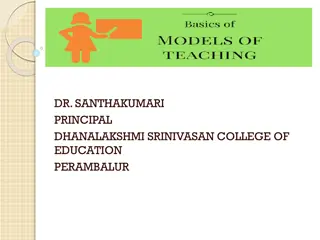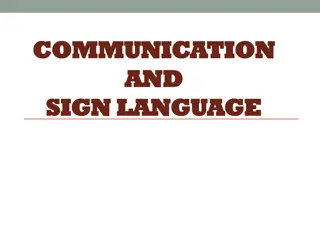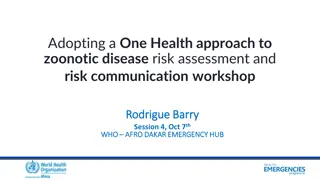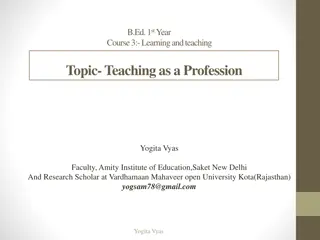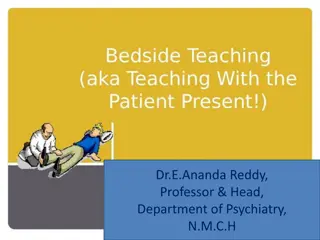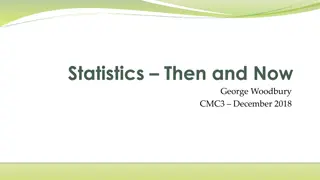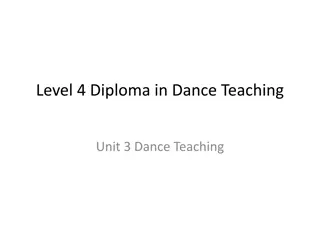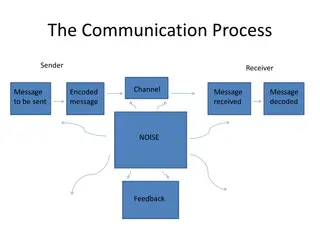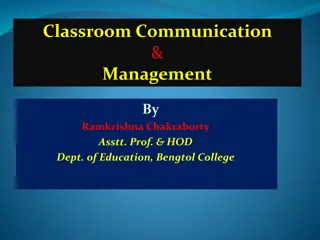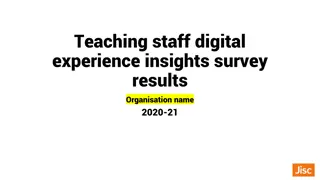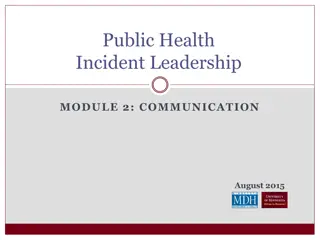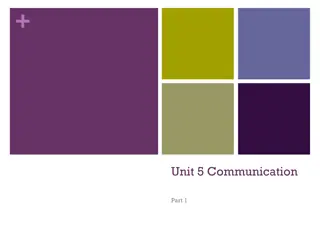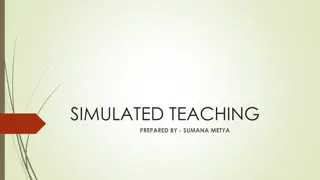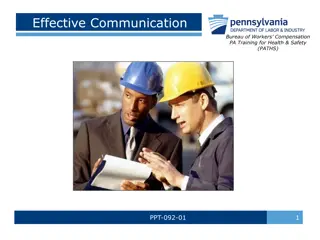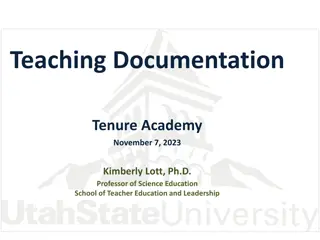Enhancing Communication for Effective Teaching
Explore the comprehensive program "Talking for a Purpose" designed to empower educators in managing challenging behaviors and fostering compliance in children. The session covers the origins, philosophy, and components of effective communication strategies to reduce defiance and enhance teacher-student interactions.
Download Presentation

Please find below an Image/Link to download the presentation.
The content on the website is provided AS IS for your information and personal use only. It may not be sold, licensed, or shared on other websites without obtaining consent from the author.If you encounter any issues during the download, it is possible that the publisher has removed the file from their server.
You are allowed to download the files provided on this website for personal or commercial use, subject to the condition that they are used lawfully. All files are the property of their respective owners.
The content on the website is provided AS IS for your information and personal use only. It may not be sold, licensed, or shared on other websites without obtaining consent from the author.
E N D
Presentation Transcript
Welcome.... Please find a seat. Please write your name on a label. Please display your name label so I can read it. Please turn your phones off or put your phone on silent.
Talking for a Purpose Language to Increase Compliance Say What You Mean and Mean What You Say Say What You Mean and Mean What You Say
Overview Of Session. Ms Morrish Background and experiences Outline explaining the origins and development of Talking for a Purpose Complete all the sub-sections of the program including various activities. Introduce to you Aaron (case example)
Background & Experiences Empowering Teachers, Parents and Children
Teacher Focused Teacher self management skills
Philosophy Beliefs, Thoughts and Philosophy Teacher Focused Behaviour Training
What would you like to learn from today s training?
The Origins of Talking for a Purpose
Talking for a Purpose Overview To: Reduce oppositional and defiant behaviors and increase compliant behaviours. By: Saying What You Mean: Increasing teachers understanding in the importance, of their responses and language interactions, when managing children s challenging behaviours. Meaning What You Say: Developing appropriate behavioral language in order to increase compliance.
Talking for a Purpose Components Empowering Teachers - but I just don t know what to do with him! My behaviour matters developing teacher regulation. Breaking the Cycle of Defiance Response Button Teachers Responses effective? Redundant Questions. Exact Moment Behaviours. Effective Commands.
Theoretical Base Eyberg (2001) PCIT (Parent Child Interactional Therapy) Patterson (1986) Coercion Process Baumrind (1960 s) parenting styles
Teacher View Doesn t Follow Directions Impulsive Refuses Manipulative Explosive Always Wants The Last Word Aggressive Controlling
Doesnt Follow Directions Hospitalised / Self Harm Single Parent Younger Brother Sickle Cell Bi - Polar Dysfunctional Relationship With Father Speech and Language / Communication Difficulties
Teacher View I just don t know what to do with him. He doesn t listen. He refuses to follow directions. He disrupts the whole class and I just can t teach. He just wants to do whatever he wants to do, whenever he wants to do it. I just can t cope with him, he frustrates me .
What pushes your button? And .
How do you respond?
Teacher Responses Initial Response Verbal Response
Increasing Self Awareness The first step toward change is awareness - Nathaniel Branden
Teacher Self Management Stop and Think BEFORE Effective communicators do not use a lot of words, they choose their words carefully, in advance. You Speak
Activity Divide a piece of paper into three sections Section 1 Section 2 Section 3
Section 1 - Behaviour Concerns Behaviour Concerns List five behaviours in your class that you would like to decrease.
Section 2 - Responses Responses How did you respond?
Redundant Questions Redundant Questions Why don t you Why don t you ever listen? ever listen! Because you never say what you mean .
What is a Redundant Question? A question that does not need to be asked. The question is not related to what the teacher wants to happen. Unfortunately, the students answers are not what the teacher wants to hear. Students responses to redundant questions annoy of even infuriate the questioner, as the answers are usually extremely relevant and precise.
Redundant vs Appropriate Questions If you WANT the answer, it is NOT redundant. Context in which you asked the question is a significant factor. STOP and THINK BEFORE you speak!
What are the three common categories of Redundant Questions?
Common categories of Redundant Questions Why Will Can
The Wills Will you ever grow up? Will you ever be able to walk without me having to take you? Will you ever understand what a good choice is? Will you sit still for once? Will you behave yourself?
The Whys Why do I have to ask you a hundred times? Why don t you ever listen? Why are you running? Why do you have that hat on your head? Why are you talking? Why aren t you doing your work? Why do I bother even trying to help you?
The Cans Can you stop talking? Can you listen for once? Can you even be bothered? Can you behave yourself?
Redundant Question Child s Response Why do I have to ask you a hundred times? Because you re a rubbish teacher No, this is only number 99. Because it s fun Why are you running? I am late for class It is quicker if you run I am a fast runner, watch Will you ever grow up? I hope so I don t want to be this size forever I am only 6. Can you listen for once? What did you say? Something about listening OK but only once
Why do you think Redundant Questions are so common?
Self Evaluating Question Limiting Redundant Questions What is the question you ask yourself BEFORE you speak?
Self Evaluating Question Do I want an answer?
Redundant Statement
The Donts Don t run. Don t shout Don t put your picture there Don t be silly Don t sit there Don t talk to me like that!
Exact Moment Behaviour EMB Effective command can replace Redundant Questions. However, before that stage, teachers need to become conscious that what they are saying is not what they actually want.
Exact Moment Behaviour What you want in that moment is the ONLY thing you say. Not the eventual outcome.
Self Evaluating Question Exact Moment Behaviour What is the question you ask yourself BEFORE you speak?
Self Evaluating Question What do I want him/her to do NOW ?
Remember! Only ask/state what you WANT DO NOT ask/state what you don t want
Exact Moment Behaviour Exact Moment Behaviour Redundant Question Redundant Question Why are you running? Can you stop pushing? Will you stop calling out?
Exact Moment Behaviour (EMB) What do you WANT to Happen? What are you going to say?
Giving Effective Commands When a command is given, the end result is not always compliant behaviours. What needs to be addressed is how the teacher is delivering the command. When giving effective commands, four teacher behaviours need to increase and one teacher behaviour needs to decrease.
Effective Commands The MB s
Why do you think it is important to increase your proximity?
Increasing Proximity When giving a command, proximity needs to be increased as this will help to: The clarity of the command Gain the student s attention Reduce the risk of shouting and repetition Reduce the risk of negative responses if the command is Ignored or not heard Reduce the opportunity to embarrass students infront of their peers.
Always Model What You Want To See or Hear Reflective Questions? Do you always model positive classroom behaviours? Have you ever shouted (in frustration) across your classroom asking for Quite Voices due to the noise levels? How do you model the required noise level in your classroom?
